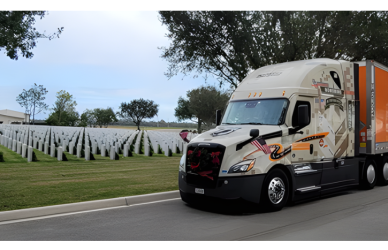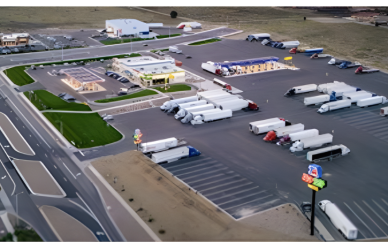When most of us think about vehicle safety, airbags are one of the first features to come to mind. But in the world of commercial trucking, the story is a little different. Unlike passenger cars, semi-trucks don’t rely on airbags to protect drivers. Instead, they are engineered with innovative technologies and reinforced designs that ensure maximum safety for drivers in unique ways. This article dives into how modern semi-trucks excel at driver protection without the need for airbags.
Why Don’t Semi Trucks Use Airbags?
It may seem surprising, but airbags aren’t standard in semi-trucks. The primary reason lies in the fundamental differences between semi-trucks and passenger vehicles. Cars are designed for lighter frames, making front-end collisions particularly dangerous for occupants—airbags help mitigate that. Semi-trucks, however, are large, heavy, and built to endure collisions differently.
According to the National Highway Traffic Safety Administration (NHTSA), airbags designed for passenger vehicles cannot handle the unique dynamics of truck accidents. This is because the energy involved and the physics of a crash in a truck differ significantly from those of smaller cars. Consequently, semi-trucks employ alternative safety measures that are more effective given their size, weight, and purposes.
Advanced Safety Features in Semi Trucks
Modern semi-trucks are equipped with state-of-the-art safety systems that take a proactive and protective approach to driver safety. These technologies are tailored to the specific challenges of operating large, heavy vehicles.
- Seat Belts That Save Lives
Seat belts remain the most basic, yet crucial, safety feature for truck drivers. According to the Federal Motor Carrier Safety Administration (FMCSA), consistent seat belt use reduces the risk of fatal injuries in truck accidents by up to 65%. They prevent drivers from being ejected in a crash and keep them secure, eliminating movement that could heighten the severity of injuries.
- Electronic Stability Control (ESC)
ESC technology plays a huge role in preventing rollovers and loss of control in slippery or hazardous conditions. It works by monitoring the truck’s movement and applying braking power to individual wheels, restoring balance when instability is detected. The Insurance Institute for Highway Safety (IIHS) reports that ESC reduces the risk of fatal crashes in large trucks by more than half, making it a must-have feature on the road.
- Collision Mitigation Systems (CMS)
Collision mitigation systems use advanced sensors, cameras, and radar to monitor the road ahead. When a potential collision is detected, they alert the driver and can even apply the brakes automatically. Studies have shown these systems to be highly effective in reducing rear-end crashes—incidents that are particularly dangerous for truck drivers.
- Lane Departure Warning and Lane-Keeping Assist
Fatigue and distraction are common challenges for truck drivers, which is why lane departure systems are so valuable. Lane departure warnings alert drivers when their truck drifts out of its lane, while lane-keeping assist gently steers the vehicle back into position. Together, they help prevent accidents caused by unintentional lane changes.
- Anti-lock Braking System (ABS)
ABS is another critical safety feature that prevents wheels from locking up during sharp braking. By maintaining traction, ABS ensures greater control in sudden stops or on uneven surfaces. It has been a standard feature in commercial trucks for years and remains vital to their safety systems.
- Reinforced Cab Designs
Unlike passenger cars, which rely on crumple zones to absorb crash impact, semi trucks are designed with stronger cab structures. These cabs are built to withstand significant impact forces, protecting drivers during side and rollover crashes where airbags would provide little added benefit.
Why These Features Outperform Airbags
The absence of airbags in semi-trucks isn’t an oversight—it’s a calculated decision informed by the unique dynamics of trucking accidents. While airbags are effective in small, light vehicles, they aren’t as beneficial in trucks due to differences in size, weight, and crash dynamics. Safety technologies like ESC, CMS, and reinforced cabs provide tailored protection that airbags simply cannot.
The Bottom Line
Semi-trucks may not utilize airbags, but they are far from lacking in safety advancements. From seat belts and electronic stability control to collision mitigation systems and robust cab designs, these vehicles are equipped with features that address the unique challenges of commercial trucking. These tailored solutions not only keep drivers safe but also underscore the industry’s commitment to continuous innovation.











